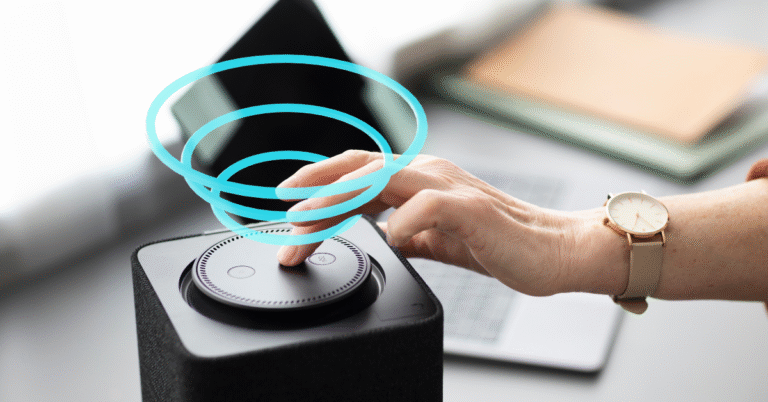Subtotal ₹0.00

Audio has become one of the most influential mediums of communication in today’s digital landscape. Whether it is for podcasts, YouTube videos, online courses, webinars, interviews, livestreams, or business presentations, clean audio quality is no longer optional. In 2026, audiences expect crystal-clear sound without background noise, echo, distortion, or volume imbalance. This has pushed creators and brands to rely heavily on AI-powered audio cleanup tools—software that uses machine learning algorithms to automatically enhance voice quality and eliminate imperfections from recordings. These tools are becoming increasingly advanced, capable of delivering studio-grade audio with minimal human effort.
As content creation grows exponentially across platforms, the need for fast, efficient, and intelligent audio processing becomes even more important. Traditional audio editing required professional skills and hours of manual cleanup, but AI completely changes that landscape. Modern AI audio cleanup tools can detect hums, clicks, background chatter, wind noise, reverb, and even microphone inconsistencies with remarkable precision. They simplify the entire production process, allowing both beginners and professionals to create high-quality audio effortlessly. In 2026, these tools are not just add-ons—they are essential components of every creator’s toolkit.
Another major reason why AI audio cleanup tools are dominating the market is the shift toward remote work and decentralized recording environments. Not everyone has access to soundproof studios or expensive microphones. People often record in homes, public spaces, offices, and outdoor environments. AI tools help level the playing field by transforming average recordings into professional-sounding audio. This has empowered small creators, freelancers, educators, and business owners to produce high-quality audio without investing thousands in equipment.
Adobe continues to lead the creative industry, and its AI audio cleanup tool—Adobe Podcast Enhance—has become a favorite among casual and professional creators. Using deep learning models trained on millions of audio samples, it transforms even the noisiest recordings into clean, broadcast-quality sound.
This tool focuses on voice clarity and tonal consistency, ensuring every spoken word is crisp. It is especially valuable for podcasters, educators, and marketers who need quick, polished results without needing audio engineering knowledge. Adobe’s seamless integration with existing Creative Cloud applications makes it easy to maintain a complete production workflow.
Descript has gained massive popularity for its text-based editing, and its Studio Sound AI feature remains one of the best tools for audio cleanup in 2026. This software uses AI to make voices sound as if they were recorded in a professional studio—regardless of the original environment.
Creators love Descript because they can edit audio by editing text, and Studio Sound enhances the cleaned audio automatically. This eliminates friction, especially for long-form content creators and podcasters who need quick, efficient editing solutions.
Krisp has evolved significantly by 2026, becoming the go-to AI tool for real-time noise cancellation. Unlike many tools that focus on post-production cleanup, Krisp works live during calls, recordings, and livestreams. It removes distractions like keyboard typing, dogs barking, fan sounds, and background conversations with exceptional accuracy.
Businesses, content creators, and remote workers depend on Krisp for meetings, webinars, and live sessions. Since real-time clarity is essential for communication, Krisp’s AI ensures professional sound without requiring a quiet environment.
Auphonic is known for delivering balanced and optimized audio through AI-driven processing. It is widely used in podcasting, radio broadcasting, and professional audio production. Its algorithms analyze speech patterns and automatically adjust loudness levels, EQ, and background noise to create a natural and polished final result.
Unlike tools that only remove noise, Auphonic improves overall sound quality through intelligent leveling and mastering. This makes it a perfect choice for creators who want detailed control without complex manual editing.
Cleanvoice AI is one of the most user-friendly and fast audio cleanup tools available in 2026. It focuses heavily on removing filler words, mouth noises, stutters, hesitations, and unwanted background noises. This makes it especially useful for podcast hosts, interviewers, and YouTubers who want smoother, more professional speech patterns.
Its AI models are trained to detect human speech imperfections very accurately. Cleanvoice is also popular because of its simple interface and lightning-fast processing, making it a favorite among beginners.
iZotope RX has long been considered the gold standard in professional audio repair. By 2026, RX 12 offers even more advanced AI models capable of cleaning severely damaged or low-quality audio while maintaining natural voice tone. It is widely used by film studios, musicians, broadcasters, and professional audio engineers.
Although it requires some technical understanding, its ability to repair audio that most tools cannot makes it unmatched in the high-end category.
Nvidia’s AI-powered audio cleanup system continues to evolve, leveraging GPU acceleration to offer real-time noise removal and voice isolation. In 2026, the improved version supports more devices and integrates with major streaming platforms. Streamers, gamers, and remote workers rely on it for clear voice capture even in loud environments.
Its ability to suppress background noise without affecting vocal clarity makes it a strong competitor in the real-time audio cleanup segment.
GPU-driven real-time cleanup
Removes keyboard, fan, and ambient noise
Perfect for streaming and gaming
Works with major communication apps
Great for creators who need instant clarity
The year 2026 brings an innovative era in audio technology, making it easier than ever to achieve professional-quality sound without expensive equipment or advanced editing skills. AI audio cleanup tools have grown smarter, faster, and more accessible across all platforms. Whether you are a podcaster, YouTuber, business owner, filmmaker, or remote worker, these AI tools help you improve sound quality and create content that meets modern standards.
What once required hours of manual editing can now be achieved in minutes through automated enhancements. As AI models continue to evolve, audio cleanup will become even more precise and intuitive. The tools discussed above lead the market due to their powerful features, user-friendly designs, and ability to deliver consistent results. Investing in the right AI audio cleanup tool is not just about improving sound—it’s about enhancing your brand’s overall professionalism and audience experience.